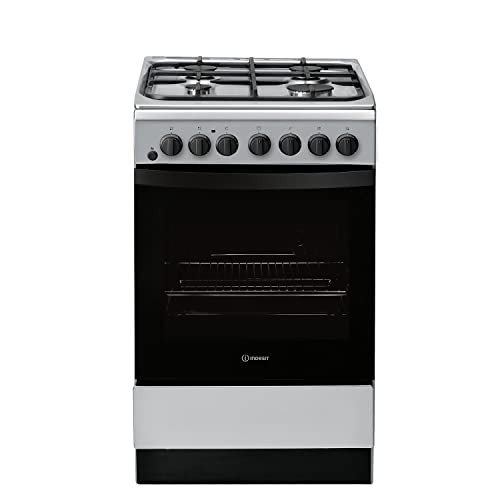Understanding Oven Hobs: The Heart of Culinary Crafting
In the world of contemporary kitchens, the oven hob sticks out as a vital appliance. Online Cooker Sales is it a central part for preparing a range of meals, but it likewise affects kitchen aesthetic appeals, functionality, and performance. This post delves into the types of oven hobs, their features, advantages, and upkeep tips. In addition, it addresses some frequently asked questions to supply a thorough understanding of this important kitchen appliance.
Types of Oven Hobs
Oven hobs can be classified into a number of types based upon their energy source and style. Understanding these variations can assist consumers make informed choices when selecting the perfect hob for their kitchen requires.
1. Gas Hobs
Gas hobs use gas or gas as fuel, using accurate temperature level control and instant heat. They are favored by lots of chefs for their ability to provide visual feedback through flame.
Pros:
- Quick heat-up time.
- Accurate temperature level adjustments.
- Suitable with all kinds of pots and pans.
Cons:
- Requires a continuous gas supply.
- Security worry about open flames.
- Needs more upkeep.
2. Electric Hobs
Electric hobs are powered by electricity and feature smooth glass or ceramic surfaces. They frequently are available in two types: coil and solid.
Pros:
- Sleek look.
- No open flames, reducing safety dangers.
- Easy to clean.
Cons:
- Slower to warm up and cool off.
- May need specific cookware (induction).
- Some might have uneven heat circulation.
3. Induction Hobs
Induction hobs utilize electromagnetic energy to directly heat up pots and pans. They just deal with ferromagnetic cookware.
Pros:
- Very energy-efficient.
- Fast cooling and heating times.
- Safe, as the surface stays fairly cool.
Cons:
- Limited to particular kinds of pots and pans.
- Higher preliminary cost.
- Can produce sound when in usage.
4. Strong Plate Hobs
These electric hobs include strong metal plates that warm up and maintain heat for cooking.
Pros:
- Durable and dependable.
- Simple operation.
Cons:
- Takes time to heat up.
- Less effective than induction and gas designs.
| Hob Type | Heat Source | Looks | Maintenance |
|---|---|---|---|
| Gas Hobs | Gas | Conventional | Moderate |
| Electric Hobs | Electrical power | Modern/Sleek | Low |
| Induction Hobs | Electromagnetic | Contemporary | Low |
| Solid Plate Hobs | Electrical energy | Timeless | Average |
Features to Consider When Choosing an Oven Hob
When selecting the perfect oven hob for your kitchen, there are a number of important functions to take into consideration. These include:
- Size: Ensure the hob fits the designated area in your kitchen.
- Number of Burners: Consider your cooking style and the number of burners you'll need.
- Control Type: Look for easy to use controls, whether touch-sensitive or knobs.
- Security Features: Many modern hobs consist of safety procedures like flame failure devices or kid locks.
- Energy Efficiency: Choose energy-efficient designs to save on energy expenses and decrease your ecological effect.
Advantages of Using an Oven Hob
The oven hob offers several advantages that deal with both amateur cooks and expert chefs. Here are some key advantages:
- Versatility: Whether boiling, frying, simmering, or sautéing, an oven hob accommodates numerous cooking strategies.
- Convenience: Many hobs included additional functions like timers and automatic shut-off systems for included benefit in busy kitchen areas.
- Enhanced Cooking Control: The instant heat responses of gas and induction hobs permit better control over cooking temperature levels.
- Style Enhancement: Modern hobs can boost the total visual of a kitchen, adding a contemporary touch.
Upkeep Tips for an Oven Hob
To ensure the durability and efficiency of an oven hob, correct maintenance is vital. Here are some maintenance suggestions:
Regular Cleaning:
- Use a soft fabric and moderate cleaning agent to tidy surfaces after each usage.
- For induction and ceramic hobs, avoid abrasive cleaners to avoid scratching.
Examine for Wear and Tear:
- Inspect rubber seals and connections in gas hobs frequently for any damages or leaks.
- Ensure electrical connections are safe in electric hobs.
Professional Servicing:
- Schedule regular upkeep talk to a qualified professional to prevent major problems.
The oven hob is an important part in any kitchen, serving as a centerpiece for cooking undertakings. Whether selecting gas, electric, or induction, comprehending the different types, features, and upkeep requirements is essential for making an educated choice. A well-chosen hob not only improves cooking efficiency however also boosts the overall kitchen experience.
Often Asked Questions (FAQs)
1. What type of hob is best for a novice?
Electric hobs are often favored by newbies due to their ease of use and upkeep.
2. Can I utilize all pots and pans on an induction hob?
No, induction hobs require ferromagnetic cookware for them to work properly.
3. How do I know if my gas hob is working effectively?
Routinely inspect for even flame distribution and listen for any hissing sounds that might suggest leaks. If in doubt, seek advice from an expert.
4. Is a greater cost constantly better for hobs?
Not necessarily. While higher-priced models may provide innovative functions, numerous mid-range items provide exceptional efficiency and durability.
5. Can I install a hob myself?
It is recommended to employ a professional, particularly for gas hobs, due to security concerns and regional policies.
By understanding the nuances of oven hobs, home cooks can make an educated choice that lines up with their cooking ambitions and kitchen designs. Choosing the best hob enhances both the cooking experience and kitchen aesthetic appeals, making it an essential investment for any home.

